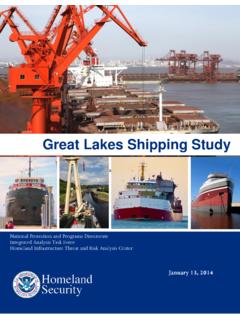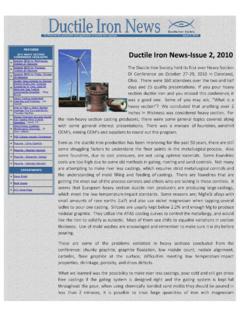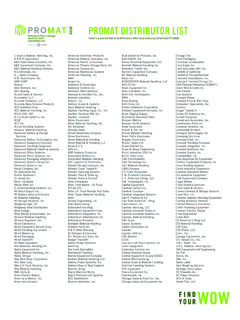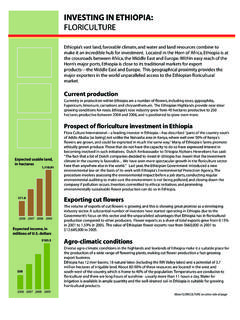Transcription of SECTION ONE – ENVIRONMENTAL REGULATIONS
1 Michigan Guide to ENVIRONMENTAL Health and Safety REGULATIONS Rev. 2018 SECTION ONE ENVIRONMENTAL REGULATIONS CHAPTER 9: Drinking Water IN THIS CHAPTER Purpose and Applicability of REGULATIONS .. 9-1 Agencies and Their Laws and Rules .. 9-2 Key to Chapter .. 9-2 Noncommunity (Type II) Water Supplies .. 9-3 Water Use Program Great Lakes Protection .. 9-5 Type III Water Supplies .. 9-5 Cross-Connection Requirements .. 9-6 WHERE TO GO FOR HELP .. 9-8 Purpose and Applicability of REGULATIONS Manufacturers are required to supply a safe source of drinking water to their employees that is free from microbial and chemical contamination. Also, many manufacturing activities (such as in the food industry) require safe, potable water for their processes. Most manufacturers in Michigan are customers of a public water system through connection to a municipal or community water supply. However, those plants that supply their own water from a well or surface water source are public water systems (called noncommunity water supplies) and must meet certain drinking water standards.
2 Additionally, these water supplies must meet construction, operational, and sampling requirements. They must also meet both state and local ordinances regarding cross-connection control measures. Generally, customers who buy water from a community water supply ( the City of Detroit or Grand Rapids) do not have sampling requirements; however, manufacturing complexes that inject chemicals into purchased water or use the water for certain purposes such as food manufacturing, may have additional requirements. Those requirements are the responsibility of the water supplier. The cross-connection SECTION of this chapter is useful for the protection of your employees (Chapter ). In addition, plumbing codes apply (see Chapter ). SECTION ONE: ENVIRONMENTAL REGULATIONS 9-2 ENVIRONMENTAL Assistance Center 800-662-9278 Agencies and Their Laws and Rules In 1974, the Congress passed the Safe Drinking Water Act.
3 This act gave the ENVIRONMENTAL Protection Agency ( EPA) responsibility for establishing and enforcing drinking water standards nationwide. The Michigan Safe Drinking Water Act, Public Act 399, as amended, (Act 399) was enacted in 1976 and enables the Michigan Department of ENVIRONMENTAL Quality (DEQ) to maintain direct control over the public drinking water program in the state. Community, or Type I, public water supplies serve 25 or more residents or 15 or more living units year-round. These water systems are regulated directly by DEQ staff. Noncommunity, or Type II, public water supplies serve 25 persons or more at least 60 days per year, at facilities such as factories, schools, restaurants, campgrounds, churches, etc. (A service connection is defined as a direct connection from a distribution water main to a living unit or other site to provide water for drinking or household purposes. ) The DEQ contracts with local health departments to provide technical assistance and administer the noncommunity water supply REGULATIONS .
4 Local health departments also provide services for public water supplies that serve less than 25 persons (Type III supplies). In addition to requirements specific to public water supplies outlined in Act 399, water well construction standards are regulated by Part 127 (Water Supply and Sewer Systems) of the Public Health Code, Public Act 368 of 1978, as amended (Act 368), and Administrative Rules, as amended. Also, when a well is constructed to obtain water to be used solely in a manufacturing process and not for any drinking or sanitary purposes, it is regulated under Part 127. Some examples of this include non-contact cooling water, paper and pulp manufacturing, and certain fabrication operations. Key to Chapter DRINKING WATER SOURCE What type of drinking water supply do you have at your facility? There are three types of public water supplies defined in the state of Michigan: Community (Type I) water supplies provide year-round service to 15 or more LIVING units or 25 or more RESIDENTS.
5 Examples include municipal water systems, apartment complexes, manufactured housing communities and subdivisions on their own water source. Source water for community supplies may be obtained from treating surface Type I Community See also Type III Chapter See also Type II NonCommunity Chapter See also Chapter 9: Drinking Water ENVIRONMENTAL Assistance Center - 800-662-9278 9-3water or from groundwater wells. Generally, manufacturers are customers of Type I community water supplies and as such, do not have jurisdiction over the supply itself, just their own distribution systems. A water quality report (Consumer Confidence Report) is prepared by community water supplies annually; contact your local water utility for a copy. A manufacturer that is a customer of a municipal or community water system may have obligations regarding cross-connection control. The supplier of water has local jurisdiction regarding this issue.
6 More information on community water supply is available at (select Drinking Water from the menu). If your facility is a customer of a community water supply system, review Chapter related to cross-connections. Noncommunity (Type II) water supplies provide service to 15 or more SERVICECONNECTIONS or 25 or more INDIVIDUALS on an average daily basis of at least 60 DAYS OUT OF THE YEAR. Examples are schools, restaurants, industries,campgrounds, etc., which are on their own water supply, such as a well. Treated surfacewater meeting safe drinking water standards may also be a source of water for anoncommunity supply. Manufacturers may be Type II water supplies on their own supplyor may be connected to a well serving more than one customer, such as a well thatserves an industrial complex with more than one business in your facility has a Type II water supply, go to Chapters and related to cross-connections.
7 Type III water supplies are not Type I or II; they serve less than 25 persons per include small businesses and manufacturers, small apartment complexes,and wells serving only a few your facility has a Type III water supply, go to Chapter Noncommunity (Type II) Water Supplies The local health department performs sanitary surveys of Type II water supplies at least once every five years. Noncommunity supplies are required to sample routinely, meet drinking water standards, and maintain their water systems in a sanitary condition in accordance with Act 399. Type II noncommunity supplies fall under two categories: A transient noncommunity water supply is one that servesat least 15 service connections or at least 25 people on anaverage daily basis for at least 60 days out of the include campgrounds, highway rest areas, andchurches. A nontransient noncommunity water supply is one that routinely serves the same 25or more people daily at least six months out of the year.
8 Examples include factories,schools, or other businesses that employ 25 persons or Commercial/ Industrial Well Head SECTION ONE: ENVIRONMENTAL REGULATIONS 9-4 ENVIRONMENTAL Assistance Center 800-662-9278 Permits & Permit Fees Construction permits for Type II water supplies must be issued by the local health department for the county. Construction details and a site plan must be included in the application submittal. Permit fees for Type II noncommunity water supplies are set by the local health department issuing the permit. These fees vary. Annual Fees & Laboratory Fees Noncommunity supplies are required to pay an annual fee assessed by October 1 each year based upon their status as a transient or nontransient noncommunity public water supply. The fee is due by November 30 each year. The owner of the water supply is also responsible for payment of any laboratory fees for testing of required water samples.
9 Certified Operator Requirements An operator must be certified in the classification designated by Act 399 if they are in charge of a treatment system necessary for public health reasons at any Type II noncommunity water supply, or a distribution system at a Type II nontransient noncommunity water supply. Treatment is defined as a technology that is employed by a public water supply for the control of the chemical, physical, biological, or radiological characteristics of the water supply. A distribution system is composed of components where water is distributed and used for drinking/household purposes. The components may include piping, fixtures, transmission mains, pumps, storage tanks, etc. As of December 8, 2002, all nontransient noncommunity water systems are required to have a certified operator. The certification by the DEQ is based on the operator s qualifications, experience, a written examination, and a laboratory examination in some cases.
10 Noncommunity water supply operators are certified based on a written or oral examination and may have to demonstrate knowledge of the operation of the treatment and monitoring equipment. For more information about the Operator Training and Certification Program, visit Sampling Requirements Type II noncommunity water supplies must all sample for coliform bacteria and nitrates/nitrites; however, the nontransient supplies must also sample for metals, cyanide, arsenic, volatile organic compounds, synthetic organic compounds, lead, and copper. Other sampling requirements may apply if certain treatment technologies are used, such as corrosion control systems. Sampling requirements are based upon which category the water supply falls under, and the sampling frequency is determined by the local health department based on inspection results, water quality, population served, and sampling history. The laboratories used by the supply must be certified by the state for the components being tested.
















